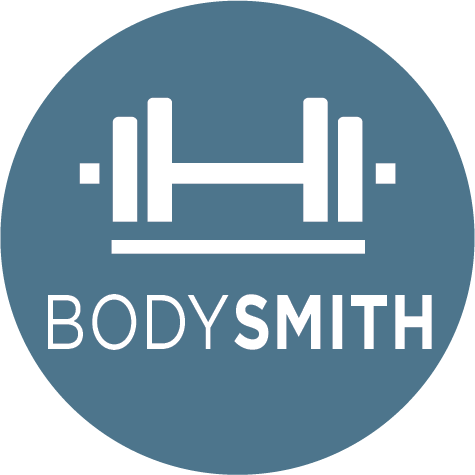
Debunking the myth of “Lifting low rep will make you bulky. Lift high reps to get cut.”
I overhear it all the time. By men. Women. Novices. Even trainers. “Lifting low reps makes you bulky. If you wanna get cut, you need to do high repetition sets.” And every time I hear this urban myth I throw up a little bit in my mouth, because it’s just not true! It’s as if people think that if you only do 5 repetitions and then stop (regardless of whether the weight is even relatively heavy or not) you will magically grow muscle.
Let’s for a moment define what it means to be “cut.” To me, being cut means to have an extremely low body fat percentage. So low, that you can actually see the separation between various muscle groups (cuts) and even the striations of the muscle fibers themselves. Does that match your definition as well? Cool. So why would lifting higher reps of weight be advantageous to achieve this goal? My guess is that people are making two inaccurate assumptions when arriving at the high rep for definition conclusion.
Inaccurate assumption #1: “Lifting in low rep ranges is the strategy for getting bigger, which is counter-productive for my wanting to be skinny.”
First, the purpose of choosing low repetition sets is to increase the intensity or resistance of the desired lift or movement. (One simply cannot lift “relatively” heavy weight for more than 10 seconds or so). And yes, lifting progressively heavier weights is the strategy for overloading and subsequently “growing” muscle. However, studies actually show that lifting in repetition ranges of 1-5 are more conducive for building strength and power, whereas working in rep ranges of 6-12 (with slightly lighter weight, less rest between sets, and slower tempo) have more anabolic potential. Why is this?
Low repetition sets do not cycle through the different types of muscle fibers because the exertion is simply over too quickly to necessitate it. That means not all muscle fibers are even being sufficiently overloaded, therefore it is harder to maximize muscle growth with that formula alone. Also, it takes more “time under tension” to increase blood serum levels of anabolic hormones and lifting for only 10 seconds is not going to get there. The muscle fibers that are used during these low rep bursts do in fact generally grow larger than their “slower” more “aerobic” counter-parts (which is where I believe this whole myth came to become a false truth) but that alone will not match the hypertrophic capabilities of medium sized repetition sets when combined with the ONE THING THAT MATTERS THE MOST WHEN DETERMINING WHETHER YOU WILL GET BIGGER OR SMALLER, REGARDLESS OF HOW YOU CHOOSE TO EXERCISE…. A SURPLUS OF CALORIES!!!!
Yes ladies and gentlemen, you simply are not going to get bulky, even when lifting heavy weights if you do not exceed your caloric needs. In fact, it is my belief that if you really do want to lose body fat, it would be in your best interest to increase your fat burning potential by building lean muscle (which is far more dense and takes up far less space than fat, so it’s not like building muscle will make you bigger if you are indeed losing equal parts body fat).
2. Inaccurate assumption #2: “Cardio is better for getting lean, and therefore high rep weight training can simulate this aerobic type of workout.”
Don’t get me wrong, I’m all about turning resistance training into a more “metabolic,” “aerobic” conditioning routine from time to time, in which case, to keep you moving the entire workout we will have to work with lighter weights in higher rep ranges. With that being said, the point of doing that type of workout is more about the health and fitness benefits, not just body fat reduction.
Low intensity, sustained cardio is not the best thing for getting lean (Read fat burning zone myths).
Strategic dieting and BUILDING muscle is.
Lifting light weights for high rep ranges is not going to get you cut. In fact, I only really use lighter weights in high rep ranges for two purposes: Working on technique with a new move and increasing joint integrity (so that we can lift heavy going forward). Aside from that, if you aren’t periodically working your muscles to exhaustion, regardless of your chosen rep range, you aren’t going to see much benefit in the way of body composition change. It’s not about the number of repetitions. It never was. It is all about the level of intensity you can achieve and maintain. And in the weight room, intensity refers to weight. So I would advise that if you are trying to get skinny for the summer, you use those light weights to perfect your form and get those joints ready for some HEAVY lifting in your near future.




881 Comments